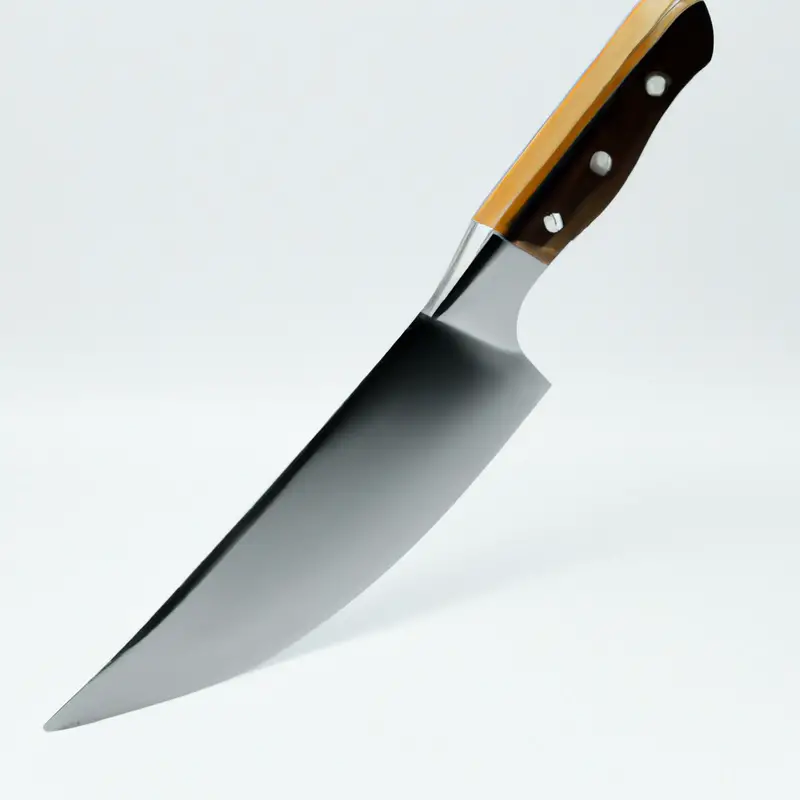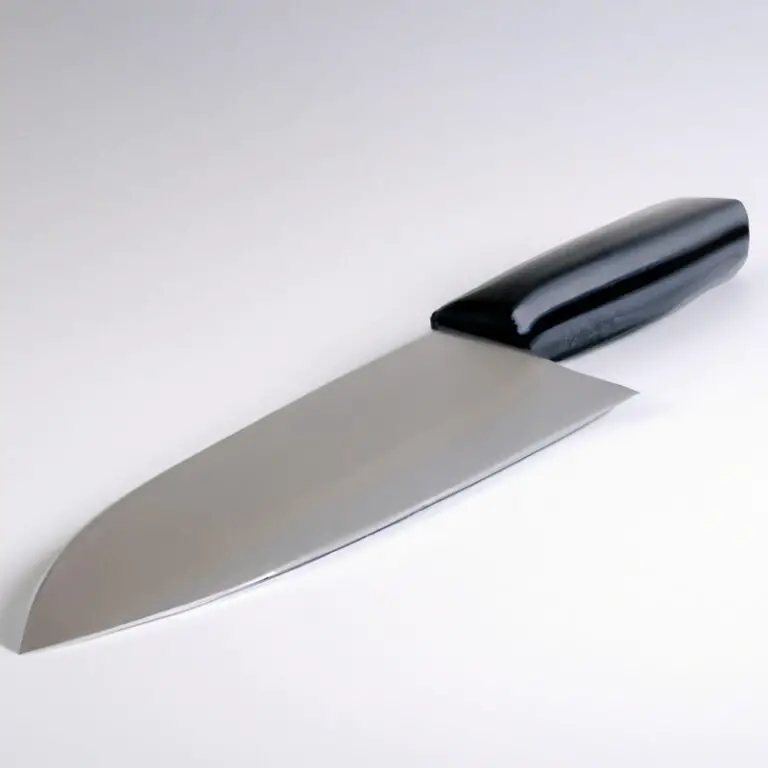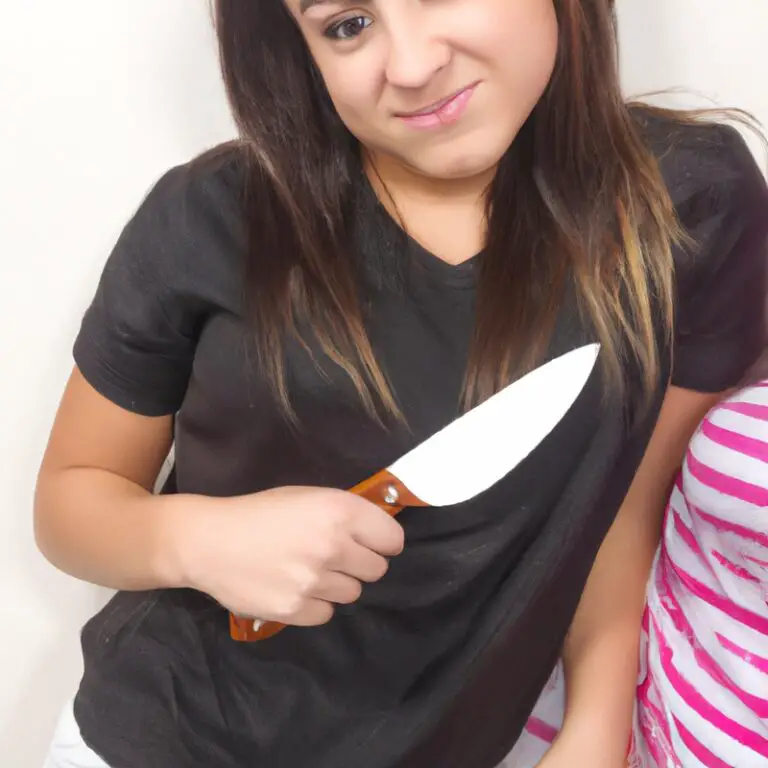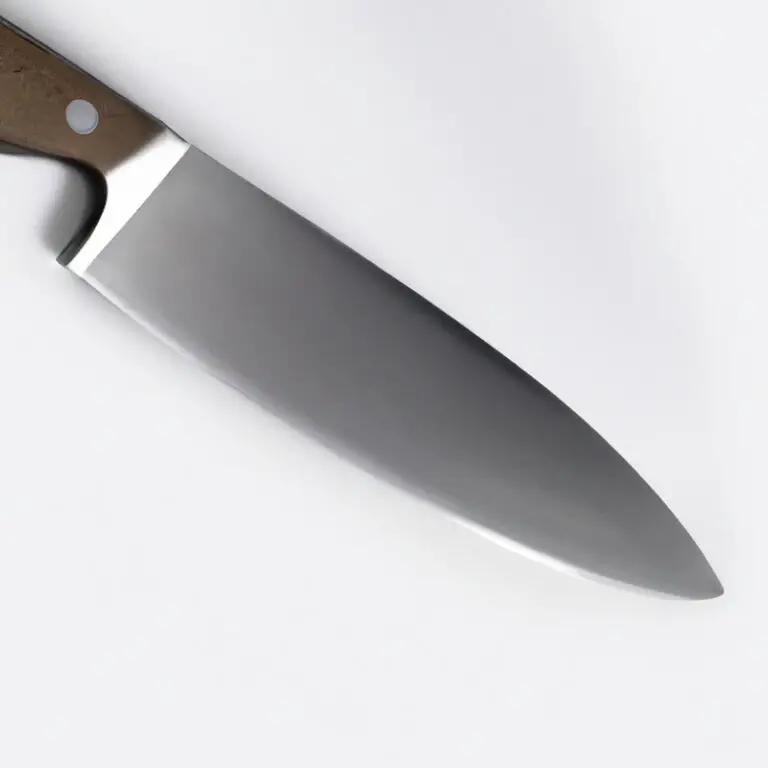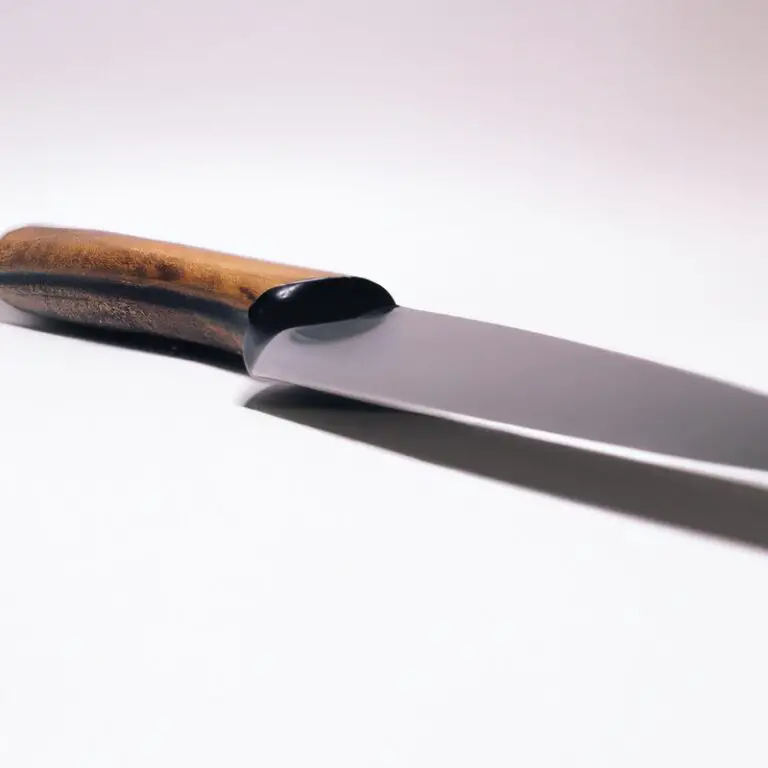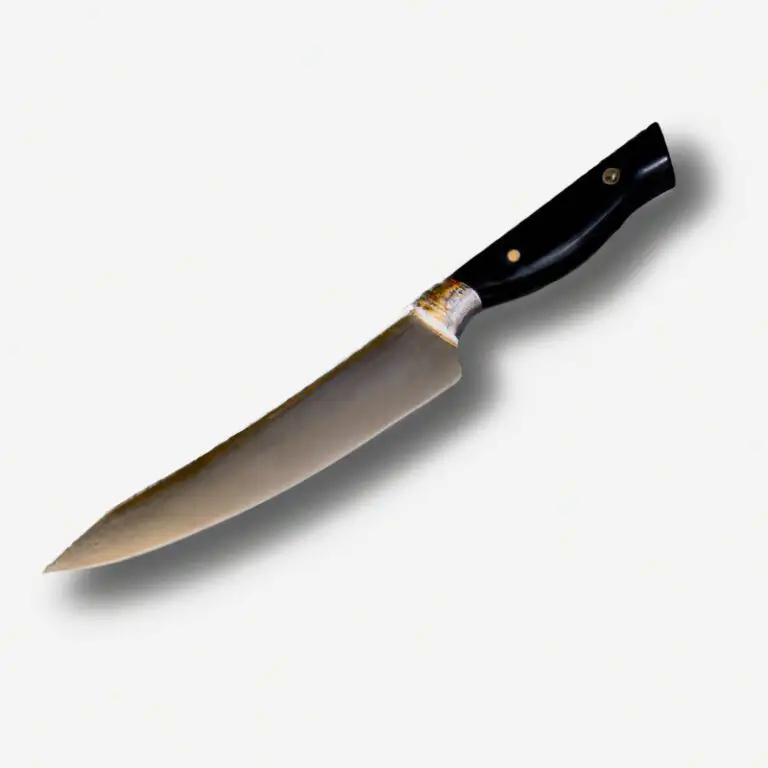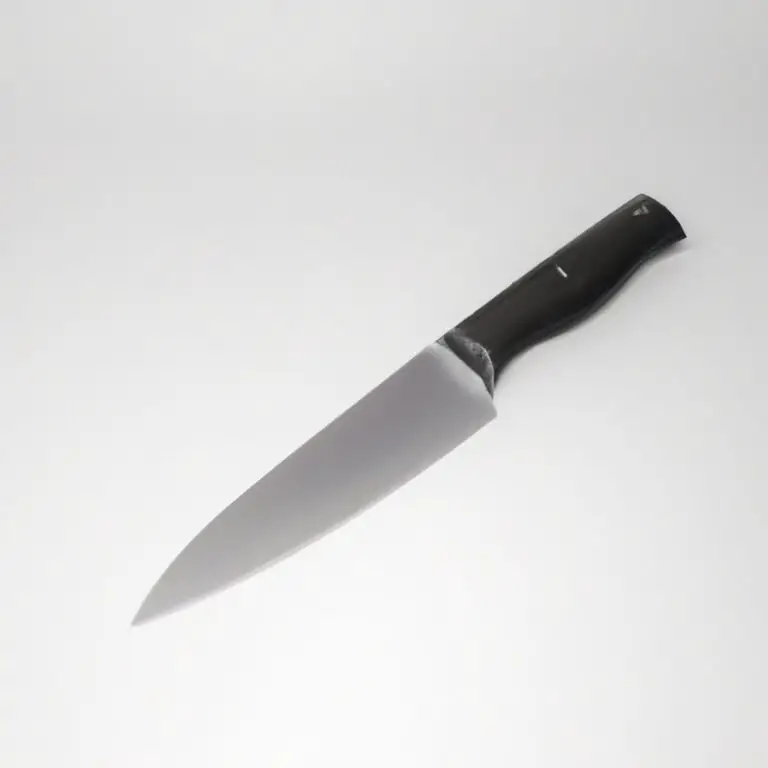What Is The Purpose Of a Tang On a Chef Knife? Explained
Key Takeaways:
- The tang of a chef knife is an extension of the blade that provides balance and stability to the user.
- A full tang knife offers the most durability and long-term performance, making it an excellent investment for professional chefs and home cooks alike.
- The design and shape of a tang can greatly affect the handling and comfort of a knife, so it’s important to consider this feature when choosing a chef knife.
- Overall, the tang of a chef knife plays a crucial role in its functionality, and understanding its purpose can help you make more informed decisions when selecting kitchen knives.
When it comes to kitchen knives, the blade is only one part of the story. An often overlooked but essential component is the tang, the unassuming extension that runs through the handle.
But what is the method behind this tangy madness?
As it turns out, the tang plays a massive role in the balance, control, and durability of your kitchen knife. In this article, we’ll delve deep into the anatomy of a chef knife and uncover the secrets of tangs – from their design to their materials to their impact on different cooking styles.
Whether you’re a seasoned chef or a novice home cook, understanding the importance of tangs can change the way you view your knives.
| Question | Answer |
|---|---|
| What is a tang? | The tang is the part of the metal blade that extends into the handle of a knife, providing stability and balance. |
| What is the purpose of a tang? | The purpose of a tang is to provide a solid foundation for the blade and to ensure that the handle is securely attached to the knife. |
| What is a full tang knife? | A full tang knife has a tang that extends the entire length of the handle, providing maximum stability and balance. |
| What is a partial tang knife? | A partial tang knife has a tang that only extends partway into the handle, which may affect the knife’s stability and balance. |
Understanding the Anatomy of a Chef Knife: The Role of a Tang
The tang is the part of the blade that extends into the handle of a chef knife. It’s an essential component of a knife’s anatomy, impacting the knife’s balance, control, and durability.
A full tang extends throughout the entire length of the handle and increases the knife’s weight distribution for better balance and control.
On the other hand, a partial tang only extends partially into the handle, reducing the knife’s balance and control. Tangs can be made of various materials, including the same steel as the blade, carbon fiber, or wood.
The shape of the tang can also differ, from tapered to slab to rat-tail.
The type of tang and its design plays a significant role in a knife’s weight distribution, and how it feels in the hand. The tangs’ importance in different cooking styles and techniques cannot be emphasized enough.
For instance, a full tang knife is ideal for chopping because it provides an excellent grip and balance.
Partial tangs, on the other hand, are suitable for filleting fish or slicing through vegetables because they are lighter and more maneuverable. To ensure the longevity of your chef knife, it is essential to maintain the tang correctly.
Avoid exposing it to moisture or washing in a dishwasher, as this can cause corrosion or damage to the knife.
Instead, wipe your knife after each use and store it in a dry place. Understanding the tang’s role in a chef knife is crucial in choosing the right knife for your cooking needs.
By considering the tang’s type, design, and materials, you can select a knife that feels comfortable, is balanced, and meets your cooking style and technique demands.
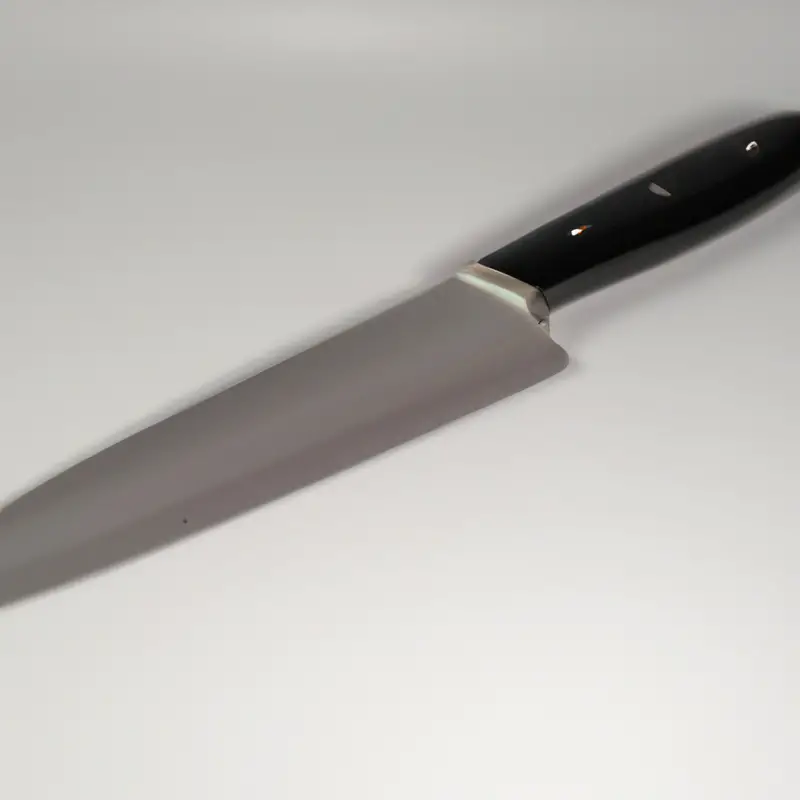
The Tang’s Impact on Knife Balance and Control
The tang of a chef knife plays a crucial role in determining the knife’s overall balance and control. A properly balanced knife ensures that the blade and handle work in harmony, allowing for effortless and precise movements during cutting and chopping tasks.
The placement of the tang affects the weight distribution of the knife, and a knife with a full tang provides better balance than one with a partial tang.
Additionally, a strong and durable tang material, such as stainless steel or high-carbon steel, can enhance the knife’s overall performance and longevity. The shape and design of the tang also impact the handle attachment, allowing for a secure and comfortable grip.
In summary, the tang’s impact on knife balance and control is significant, and selecting a knife with the appropriate tang design is crucial for a successful culinary experience.
Different Types of Tangs Found in Chef Knives
There are two primary types of tangs found in chef knives: full and partial. Full tang knives have a metal piece that extends the entire length of the handle, providing balance and stability.
The additional weight of a full tang also allows for more control when cutting.
Partial tang knives have a metal piece that only extends partway into the handle. This can make the knife lighter and less expensive, but may also make it less durable and less balanced.
Within these categories, there are also different types of tang shapes.
Tapered tangs decrease in size toward the end of the handle, while slab tangs are a consistent thickness throughout the handle. Rat-tail tangs are narrower than the rest of the blade and do not provide as much stability.
When choosing a chef knife, it’s essential to consider the type and shape of the tang, as this will affect the knife’s performance and durability.
Full Tang vs Partial Tang: Which is Better?
Full tang is superior to partial tang in terms of strength, durability, and balance. With a full tang, the blade extends from the tip to the handle, providing better balance and control.
Partial tang knives have their blade attached to a smaller portion of the handle, which can cause the knife to feel unstable and unbalanced.
Full tang knives are more reliable and durable because they are constructed from a single piece of metal, reducing the risk of breaking or coming apart. In addition, full tang knives are easier to maintain and repair as the blade and handle are secured together by a series of rivets.
Ultimately, investing in a full tang chef knife will provide better performance and longevity.
Tang Materials: Impact on Durability and Performance
The materials used in the construction of a tang can significantly impact the durability and performance of a chef knife. Stainless steel tangs often provide better corrosion resistance, resulting in a longer life span for the knife.
High-grade carbon steel tangs, on the other hand, are known for their strength and durability, making them a popular choice among chefs.
Titanium tangs offer both strength and corrosion resistance, but can be brittle if not properly designed and constructed. Other materials used for tangs include brass, copper, and nickel silver, which are often used for aesthetic purposes rather than durability.
Ultimately, the choice of tang material depends on the chef’s preference and specific needs.
It is important to choose a high-quality material that will hold up to regular use and maintenance, ensuring longevity for the knife.
Effects of Tang Design on a Knife’s Weight Distribution
The design of a tang has a significant impact on a knife’s weight distribution. A full tang, for instance, offers a better-balanced knife with the weight distributed evenly throughout the blade’s length and handle.
This design minimizes the chances of a chef’s hand slipping towards the blade, reducing the risk of injury.
On the other hand, a partial tang may create an unbalanced knife, which might require more effort to control and cause discomfort for the user. The weight distribution might also affect the knife’s overall performance, such as its ability to cut through food efficiently.
Choosing the right tang design should be a priority for chefs looking to enhance their culinary skills.
Tang Shapes: From Tapered to Slab to Rat-Tail
Tang shapes refer to the different designs that a knife’s tang can take. The three most common tang shapes are tapered, slab, and rat-tail.
A tapered tang is widest at the knife’s bolster and narrows toward the end of the tang.
This design makes the handle more comfortable and allows for better control over the knife. A slab tang is rectangular in shape, and the handle is attached to the flattened end.
This type of tang is less common in modern chef knives, but it was popular in older designs.
A rat-tail tang is long and thin, tapering to a point at the end. It is named for the resemblance to a rat’s tail.
This type of tang can be weaker than other designs, but it is commonly found in less expensive knives.
The tang shape affects the weight distribution of the knife and can impact overall balance and control. It is important to choose a tang shape that feels comfortable and secure in your hand.
Tangs and Handle Attachment: How They Are Integrated
The tang of a chef knife is an essential component of the knife’s design, as it directly affects the handle attachment. In general, there are two main types of tangs: full tangs and partial tangs.
Full tang knives have a tang that runs the full length of the handle, while partial tang knives have a shorter tang that does not reach the end of the handle.
Handle attachment methods vary, but a secure attachment is critical to a knife’s overall safety and performance. Common handle attachment methods include rivets, screws, and epoxy.
Each method has its advantages and disadvantages in terms of durability, ease of maintenance, and aesthetics.
The shape and material of the tang also affect a knife’s handling and balance. A thicker, heavier tang can provide better balance and stability, while a lighter, thinner tang can make the knife feel more agile and nimble.
As always, the choice of tang shape and material should be influenced by the specific needs of the user.
In summary, the integration of the tang and handle attachment is crucial to a knife’s performance and safety. Choosing the right tang and handle attachment method can enhance the user’s experience and ensure the longevity of the knife.
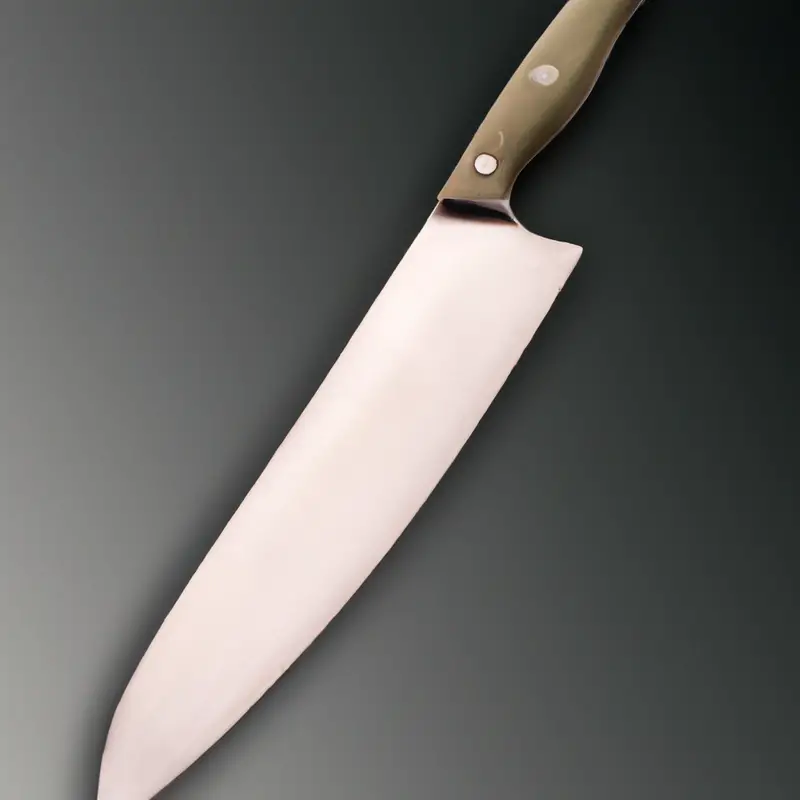
Tang Maintenance: Tips to Ensure Longevity of Your Knife
To ensure longevity of your knife, it is important to take good care of its tang. Here are some tips for tang maintenance:
- Keep your knife clean and dry after each use. Moisture can cause the tang to rust or corrode over time, leading to damage and stains.
- Regularly sharpen your knife to maintain its sharpness and prevent excessive wear and tear on the tang.
- Avoid soaking your knife in water or leaving it in a damp environment for extended periods of time. This can cause corrosion to the tang and create an unpleasant smell.
- Store your knife in a protective sheath or a knife block to prevent the tang from being exposed to moisture in the air.
- Occasionally apply a small amount of mineral oil or other food-grade oil to the tang to prevent rust and corrosion.
By following these tips, you can ensure that your chef knife will last longer and maintain its performance over time.
The Role of Tangs in Different Cooking Techniques and Styles
The tang of a chef knife plays a crucial role in different cooking techniques and styles. A full tang knife allows for better balance and control, making it ideal for heavy-duty tasks like chopping and slicing meat.
On the other hand, a partial tang knife is suited for light-duty tasks like slicing vegetables and fruits because it’s lighter and easier to maneuver.
The shape and material of the tang also come into play when it comes to different cooking techniques. A tapered tang provides more control for precision slicing and dicing, while a slab tang is better suited for heavy chopping tasks.
A rat-tail tang, on the other hand, is mainly found in low-quality knives and is not recommended for serious cooking.
Moreover, the tang’s weight distributions play a significant role in how the knife feels in the hand during use. A well-balanced knife with a full tang provides a more comfortable and secure grip, reducing hand fatigue and the risk of injury.
In summary, the tang of a chef knife is an essential factor in determining its effectiveness in various cooking techniques.
Before purchasing a chef knife, it’s crucial to understand the different types of tangs and their impact on the knife’s performance.
Final Verdict
The tang of a chef knife is a crucial component that impacts its balance, control, and overall performance. Whether it’s a full tang or a partial tang, made of steel or other materials, the design and shape of the tang play a significant role in how a knife handles and feels in the hand.
Proper maintenance of the tang is essential for ensuring the longevity of the knife, and integrating it with the handle is key to creating a seamless and comfortable grip.
Understanding the anatomy of a chef knife and the role of the tang can help elevate your cooking experience, whether you’re a professional chef or a home cook. By investing in a quality chef knife with a well-designed tang, you can achieve greater precision and ease in your cooking techniques and styles.
Remember, a knife is an extension of your hand, and the tang is the foundation of that extension.
Trust in the importance of a good tang, and let it guide you to culinary excellence.

